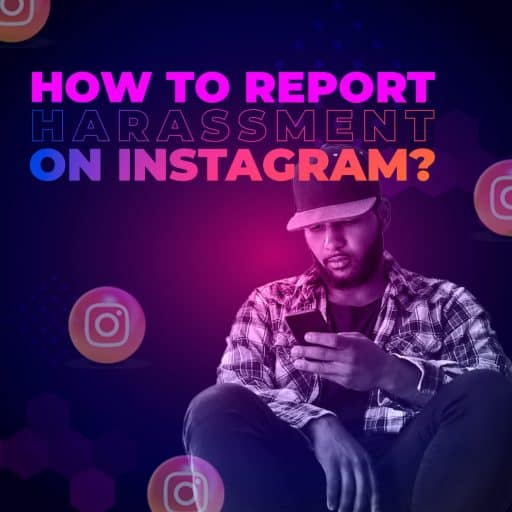Being subjected to harassment, including cyberstalking, cyberbullying, and harassing comments on digital platforms, is detrimental to your physical and mental well-being. Unfortunately, available data indicates incidents of harassment and bullying are on the rise in the United States.
For example, a 2020 study indicated that 44 percent of all internet users in the U.S. reported experiencing some form of harassment online. If that wasn’t bad enough, roughly two-thirds of adults under the age of 30, approximately 64 percent, report having experienced some form of online harassment.
If you are being subjected to harassment, do not give up hope. You can learn how to stop someone from harassing you legally.
There are viable strategies and pathways toward protecting you and halting the harassing behavior or communications. Please note that the remedies described below may vary from state to state.
What Constitutes Harassment?
Generally speaking, harassment is considered repetitive behavior or communications intended to threaten, offend, or demean another individual. In effect, harassment is behavior that is uninvited, unwanted, and unwelcome.
Please be advised that intent is a critical element when considering a claim of harassment. There needs to be evidence indicating that the harasser intended to make you feel afraid or threatened.
In many harassment cases, particularly cases involving online harassment, cyberbullying, or cyberstalking, establishing intent is relatively straightforward and verifiable through online communications and interactions with the harasser.
Harassment is considered a criminal offense. This means that, depending on the situation, the harasser may be subject to criminal charges and, if convicted, serve time in jail. In addition to criminal penalties, there are civil remedies for stopping someone from harassing you legally, including a restraining order or legal claim.
Types of Harassment
Below are some common examples of different types of harassment.
- Cyberstalking: Using technology, typically the Internet, to make another individual afraid or concerned about their safety. It includes threatening or otherwise fear-inducing behavior or communications, involves an invasion of a person’s relative right to privacy, and manifests in repeated actions over time.
- Cyberbullying: Using electronic means to threaten, embarrass, or target another individual. For example, online threats and aggressive or offensive texts, tweets, posts, or messages are generally considered forms of cyberbullying.
- Threatening to commit an act of violence: Communications intended to cause physical harm or fear in another individual.
- Verbal abuse: Insulting or offensive remarks or communications, whether in-person or online.
- Incessant phone calls or text messages: Repeated, unwelcome calls or messages that can be threatening or harassing in nature.
- Sexual harassment: Unwanted sexual advances by another, verbal or online requests for sexual favors, or other verbal or physical harassment that is sexual in nature.
- Workplace harassment: Unwelcome behavior by coworkers, supervisors, or clients that creates an intimidating, hostile, or offensive workplace.
How Can I Stop Someone From Harassing Me?
If you are being subjected to harassment, do not throw your hands up in despair. It is possible to figure out how to stop someone from harassing you legally. First and foremost, it is important to calmly and clearly state to the harasser that you do not want to engage further, and they need to stop the harassing behavior.
For example, if you are being subjected to repeated and unwanted text messages, you may want to respond by expressly stating, “Your text messages are making me feel uncomfortable. Please stop.”
If the harassing behavior or communications continue after you’ve asked them to stop, then you should consider exploring other ways to get the harassment to stop, including possibly contacting law enforcement.
Contact Law Enforcement
If you have reason to believe the harassment could escalate to physical violence or other forms of imminent harm, then contact the police right away. If you already have a restraining order in place against the harasser, then contact the police and request that they enforce the provisions of the order.
If the harasser is breaking other laws, inform the police. These violations may lead to the harasser being arrested.
Send the Harasser a Cease-and-Desist Letter
A strategy for stopping someone from harassing you legally is to send a cease and desist letter. The letter is a formal way of telling your harasser to stop what they are doing immediately.
The fact that the letter is in writing creates an official record of you telling the harasser “no more.” It can also serve as evidence that you rejected the harasser’s actions or communications. Make sure to retain copies of the cease-and-desist letter for your records.
Maintain Records of the Harassing Behavior or Communications
In addition to sending a cease-and-desist letter, it is recommended to maintain records of the communications or interactions with the harasser. These records will, in effect, help build your case in the event legal action needs to be pursued. It may make sense to retain a log or notebook describing each incident of harassment, including the dates and times.
If you are being harassed via text and emails, keep these harassing communications in a folder. In addition, any photos and screenshots sent by the harasser should be retained. Voice recordings, such as messages left on your mobile device, should also be preserved since they may be admissible as evidence.
Request a Restraining Order
If the harasser continues with their harassing behavior or communications, even after a cease-and-desist letter, it may be worthwhile to pursue a restraining order. For context, a restraining order is an enforceable legal document that formally directs the harasser to stop engaging in the problematic behavior.
A restraining order must be granted by a court of law. Once granted, law enforcement is authorized to enforce the provisions of the restraining order. Please be advised that you will need to serve notice to the harasser. Once they receive notice of the restraining order, it will officially go into effect.
In many instances, a restraining order will direct the harasser to remain a certain distance (e.g., 50 feet) from you or to halt any further online communications with you. The order may also restrict the times, purposes, and methods of the harasser’s communications and behavior.
As mentioned, law enforcement is empowered to execute the restraining order. If, for example, the harasser violates the restraining order, law enforcement is authorized to arrest the harasser and place them in jail.
How Digital Forensic Services Can Help
If you are being subjected to harassing messages or other behavior, including online harassment, then consider seeking professional assistance from our team at Digital Forensics Corp. We stand ready to help you navigate the situation, address the harasser, and achieve a resolution.
With a 24/7 team of digital investigators, we offer immediate assistance if you are being subjected to harassing behavior, including cyberstalking, sexual harassment, and so forth. Our digital forensic services are here to help you develop a comprehensive response plan to address your concerns and provide any evidentiary needs to you, or that the authorities may have.
Our tools and expertise can help collect and analyze evidence, including message metadata, identifying IP addresses, or tracing transaction paths to help you track down the harasser, or harassers. We provide a range of specialized services designed to address your unique needs.
Our process begins with forensic analysts conducting a comprehensive phone questionnaire to gather detailed information about what is going on. Subsequently, our team of experienced analysts will take proactive steps to address the situation, relieving you (the victim) of the investigative burden.
Using advanced techniques like IP tracking, our expert works to try and locate and identify the harasser, collecting crucial evidence such as proof of harassment. Once all essential information is gathered, the harasser will be confronted and issued a cease-and-desist letter if such correspondence is warranted.
In many instances of online harassment and cyberstalking, we have achieved success in securing an agreement from the harasser to cease contact with you, the victim. Whether you need immediate intervention with our ASAP service — delivering a comprehensive forensic report in just 24 hours — or prefer a more extended 30-day service for a detailed analysis, we tailor our offerings to fit your specific needs, including financial needs.
Our expertise can help dismantle a harasser’s anonymity, and our aggressiveness will send a clear signal that their inappropriate and harassing communications will no longer be tolerated.
After your initial service, if you’re worried about being subjected to harassing behavior again, we stand ready to offer advice and guidance. We know that being a victim of harassment can impact your mental health and psychological safety. Above all, we’re here to be a partner and support you with our forensic services and cyber security expertise.
You don’t have to go through this ordeal alone. We are here to help. Reach out to our team of digital investigators today to get your questions answered and discover how we can assist you and provide insight on how to stop someone from harassing you legally.
Sources:
Cyberbullying: Twenty Crucial Statistics for 2024 | Security.org
The State of Online Harassment | Pew Research Center






